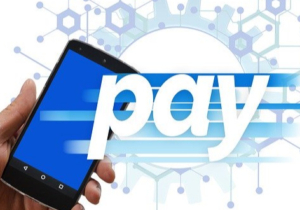New research from McKinsey shows Canadian consumers avoided cash and bank branches in May over the fear of COVID-19 and turned to contactless payments to fill the gap.
The survey found that 42% of Canadians decreased their use of cash compared to only 26% in the US. What is it that makes American consumers cling to cash?

Also, in response to pandemic fears, 26% of Canadians increased their use of contactless payments, most as a result of increased use of e-commerce, home delivery, and other changes in purchasing habits which have forced retailers and merchants to shift both sales channels and payment choices.
“Financial institutions need to put payment strategy quite high on their strategic agenda because the shaping of the future of the Canadian economy will be heavily influenced by what’s happening with payments in the next year or so,” McKinsey partner Miklos Dietz told Bloomberg in an interview.
The McKinsey report said 16% of those surveyed would increase their use of contactless payments after the COVID-19 crisis is over, while 23% also said they will visit bank branches less often after the pandemic.
Between 13% and 17% of consumers in France, Germany, and the US said they would visit bank branches less frequently after the end of the pandemic.
8%-10% drop in global payments

Another McKinsey survey predicts global payments could drop between 8% and 10% as a direct result of the coronavirus crisis. That’s a reduction of between $165 billion and $210 billion compared with a 10%-11% decline during the 2008 financial crisis.
This is due primarily to an estimated second-quarter 2020 GDP drop of up to 4.7% in a “muted recovery.” Fewer transactions make up 80% of the anticipated decline in payments revenue globally. The number of cross-border transactions is also expected to drop between 35% and 40% primarily due to declines in tourism, travel, hospitality, and restaurant sectors; electronics and consumer durables; luxury retail; and events.
COVID-19 seems to have provided Canadians and other global consumers with a powerful reason to adopt cashless payments faster. Businesses and credit card issuers have responded by increasing the limits of contact payments to $176 in Canada, and $56 in the UK and EU.
Next on the horizon for the financial payments industry is increased security and choices through the use of biometric payments and other new, secure technologies.
Bank and payment business opportunities?

Canadians also had high expectations their banks would assist during the economic uncertainty. Half want banks to waive late-payment charges on credit cards and loans while 42% want banks to reduce minimum payments on credit cards.
Dietz said this points to possible opportunities for banks, smaller competitors such as credit unions, or new digital competitors to meet the new needs of consumers. “I would expect new ideas coming from all financial institutions,” he said. “I think this is an unusually good opportunity for smaller financial players, credit unions, to be ahead of the curve.”
Benefits of cashless to consumers, business and government
A 2017 study for Visa’s Global Public Policy group looked at the potential net benefits of going cashless in 100 cities around the world which ranged from cash-centric Ankara, Karachi, and Phnom Penh to digitally-advanced Barcelona, Delhi, New York, and Toronto.
Consumers in the 100 cities spend an average of 32 hours a year in typical cash-related payment activities such as 3-4 ATM visits monthly (6.4 hours annually), visits to cash-checking facilities (3.4 hours), bank visits (7.3 hours), and paying bills in person (12 hours). Digital payments could reduce the time spent by 25% to 24 hours a year. Annual savings by reduced cash crimes could reach $278 million annually, equal to $67 for each consumer every year.

The benefits of digital payments to businesses are well known. Accepting cash and checks cost businesses roughly seven cents of every dollar compared to five cents for digital transactions. “When combining savings with increased sales from digital payments usage, our study projects that total net benefits to businesses across all 100 cities could amount to over $312 billion per year after transitioning to an achievable level of cashless activity” the Visa report notes.
For governments in these 100 cities, savings could amount to $710 million in direct administrative costs saved annually through digital payments with a further $53 million in reduced costs of crime. The potential increase in tax revenue from digital payment adoption amounts to an average of $534 million saved per year.
When it comes to contactless payment adoption, there are clear benefits outside of minimizing COVID-19 exposure which has served as an accelerant to cashless payments adoption in Canada and many markets around the world. While the US lags, growth in digital payments is inevitable and growing with the increased duration and impact of the pandemic.

